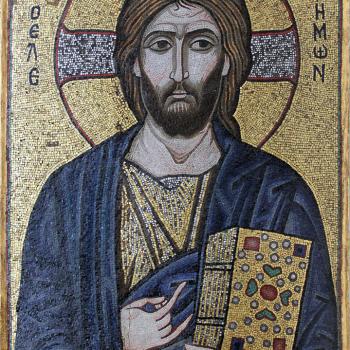Today I went to Stumphouse Tunnel.
It was a great day for a color drive through the mountains of South Carolina, and–if you ask my husband–a great day for trout fishing. We set out to do both, stopping for morning Mass along the way, then heading out to the Chattooga River, the river made famous by the 1972 dramatic thriller Deliverance, starring Jon Voight and Burt Reynolds. We were headed toward Burrells Ford, near the Georgia border.
Driving through a tunnel of fall foliage, we passed a roadside sign:
WHAT WAS THAT?!
We circled back and drove into the park, where we saw the Stumphouse Tunnel and the neighboring Issaqueena Falls. I learned a lot, and thought today I’d share our visit with you.
* * * * *
 The Stumphouse Mountain Tunnel was envisioned by the locals as a new and shorter route for the Blue Ridge Railroad between Charleston and the Ohio River Valley. In 1852, plans were initiated to drill 13 miles of tunnel through the Blue Ridge Mountains in the states of South Carolina, North Carolina and Georgia. But with only hand drills and pick-axes to use Stumphouse Tunnel, near Walhalla in Oconee County, proved a special challenge.
The Stumphouse Mountain Tunnel was envisioned by the locals as a new and shorter route for the Blue Ridge Railroad between Charleston and the Ohio River Valley. In 1852, plans were initiated to drill 13 miles of tunnel through the Blue Ridge Mountains in the states of South Carolina, North Carolina and Georgia. But with only hand drills and pick-axes to use Stumphouse Tunnel, near Walhalla in Oconee County, proved a special challenge.
To complete the project, the George Collyer Company of London brought as many as a thousand Irish workers to the area. The miners lived with their families atop Stumphouse mountain in a migrant worker community which came to be called Tunnel Hill.
The workers were sometimes rowdy, drinking heavily; and several damaging explosions were caused by inebriated miners. But a circuit rider priest, Father Jeremiah J. O’Connell, helped to regain control of the area–organizing a temperance society and bringing the residents of Tunnel Hill under control. He built a frame church dedicated to St. Patrick and a school, where the Catholic faith was imparted to children of the Irish immigrants.
Father J.J. O’Connell wrote a personal history titled Catholicity in the Carolinas and Georgia, in which he recounted his early missionary efforts:
“…I immediately set about organizing for the permanent residence of a priest, and made this the headquarters of all the up-country missions, beginning with Anderson. I constructed a frame church, large enough to accommodate the people, and an adjoining priest’s house. It was dedicated to St. Patrick. I was efficiently aided by my brother, Father Lawrence, and toward the end by Father Joseph, who was ordained in 1858 and spent his month alternately with us on the hill.
“I established a school, which was conducted by James Casey and by Cornelius Gorman, where the children of both sexes were instructed and thoroughly imbued with Catholic principles.
“Some of the men were addicted to the use of ardent spirits, whenever they found means and opportunity to indulge their favorite passion, from which as a necessary consequence followed many other vices, besides squalor, neglect of all religious duties, and an untold amount of bodily discomfort and suffering. I organized a tolerance society, held weekly meetings, and maintained its regularity to the last. This was the only means of succeeding with the people.”
 Father O’Connell went on to tell of his success: how he made churchgoers and non-drinkers of everyone, and how he encouraged the men to save their money rather than wasting it. Catholicity in the Carolinas and Georgia
Father O’Connell went on to tell of his success: how he made churchgoers and non-drinkers of everyone, and how he encouraged the men to save their money rather than wasting it. Catholicity in the Carolinas and Georgia is an interesting read for a history buff!
A Major Defeat
Construction on Stumphouse Tunnel began in 1856; but three years later, the state of South Carolina had spent more than a million dollars on the project, but the strong blue-granite rock proved difficult to cut, and only 1,617 feet of the tunnel’s planned 5,863 total feet had been excavated. With the state unwilling to invest any more money in the project, the tunnel was abandoned.
From the 1950s through 1970, Clemson University made use of the abandoned tunnel, with its 50 degree temperature and 85% humidity, to ripen blue cheese. In the 1970s, Clemson constructed an air-conditioned cheese ripening room on its campus which duplicates the conditions which exist naturally in Stumphouse Tunnel; and the cheesemaking operation was relocated there.
The name “Stumphouse” apparently refers to a log cabin which was constructed by a huntsman, hanging in the branches of a giant oak. The inhabitant of the cabin, sheltered on three sides from wintry winds that howled down from the north, was also protected from the nightly approach of the bear, the wolf and the savages.
Today, there remains on the other side of the mountain–where the tunnel was meant to exit the other side–a mound of earth which had been intended for the railway tracks. During the summer months, the mound is submerged under Crystal Lake, just west of Highway 28.
















